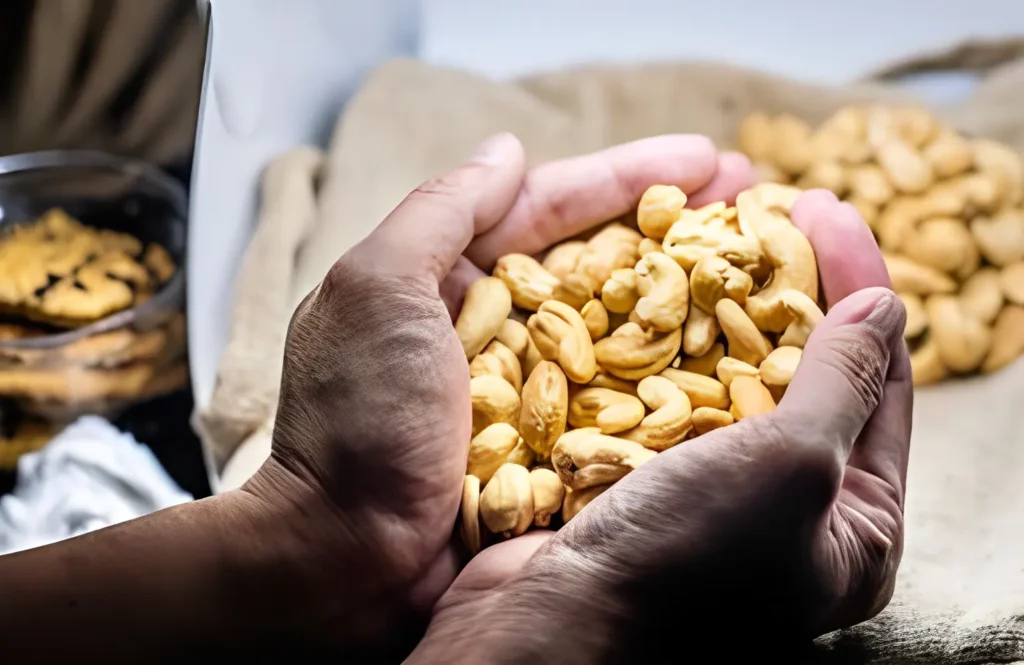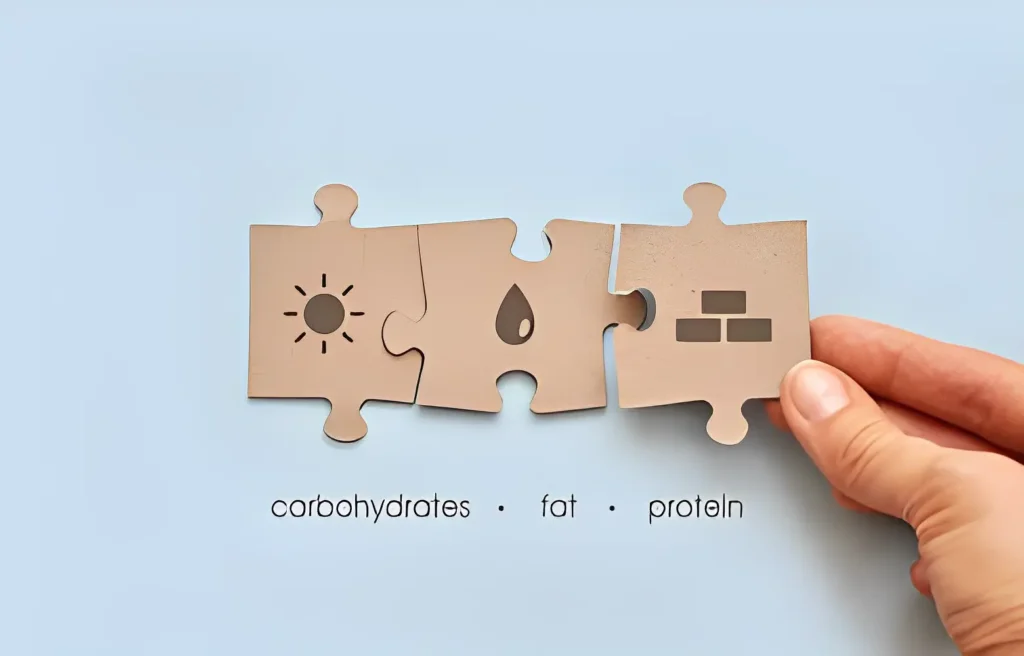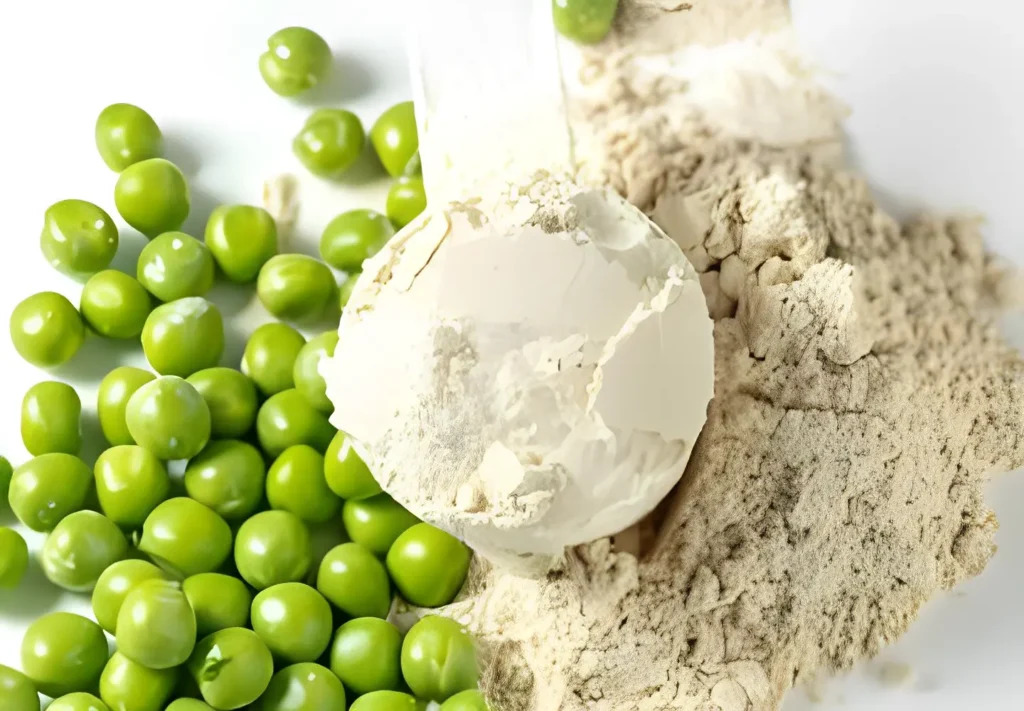So, ditch the steak and ditch the doubt: are you ready to explore the wild world of plant-based protein?
Forget all the myths and misconceptions you’ve heard about wimpy veggies and flimsy beans. The truth is, the planet is bursting with powerhouse plant-based protein sources waiting to fuel your body and rock your taste buds. But with so many options – from creamy tofu to earthy lentils – where do you even begin?
Fear not, plant-curious friend! I’m here to be your guide. Buckle up, because we’re about to embark on a delicious dive into the best plant-based protein sources out there. Prepare to be surprised, satisfied, and maybe even a little empowered to make some positive changes on your plate (and our planet!).
Let’s face it, protein is kind of a big deal. It keeps our muscles strong, our brains sharp, and our hair luscious. But did you know you don’t need a side of steak to hit your daily protein goals? That’s right, the plant kingdom is hiding a treasure trove of protein gems, packed with flavor and brimming with health benefits. So, are you ready to ditch the animal act and join the plant-powered protein party?
Let’s get this protein revolution started!
1.Top Plant-Based Protein Powerhouses: Flex Without the Flesh!

So you’re ready to ditch the meat aisle and explore the best plant-based protein sources, huh? Well, grab your fork, ’cause we’re about to turn your kitchen into a plant-powered protein paradise!
Soybean Superstars: ♀️ ♂️
- Tofu: This tofu-tactic warrior packs a wallop of protein (8 grams per 3-ounce serving) and is a shape-shifting chameleon in the kitchen. Scramble it, fry it, bake it, blend it – the possibilities are endless!
- Tempeh: This fermented friend boasts a nutty, chewy texture and a whopping 15 grams of protein per half-cup. Plus, it’s probiotic power fuels healthy gut vibes! ♀️
- Edamame: Pop these green gems right out of the pod for a protein-rich (8.5 grams per half-cup) and fiber-packed snack that’s perfect for satisfying midday cravings.
Legume Legends: ♂️
- Lentils: These tiny nutritional titans are protein powerhouses (18 grams per cooked cup!), brimming with fiber and minerals. Plus, they’re dirt-cheap and versatile enough to transform into soups, stews, dips, and even veggie burgers!
- Chickpeas: Chickpeas, chickpeas, oh how we love your creamy magic! These versatile legumes boast 7.25 grams of protein per half-cup and are the heart and soul of hummus, falafel, and countless other tasty creations.
- Black Beans: Don’t just taco ’bout them, eat ’em! Black beans are protein powerhouses (15 grams per cooked cup) with a rich, earthy flavor that adds depth to everything from chili to burritos to black bean brownies (yes, that’s a thing!).
Nutty Nirvana:
- Almonds: These crunchy champions are protein (6 grams per ounce) and healthy fat powerhouses, perfect for snacking, topping salads, or adding a creamy twist to sauces.
- Hemp Seeds: Don’t let the name fool you, hemp seeds are protein superheroes (5 grams per 3 tablespoons) with a mild, nutty flavor and a treasure trove of essential amino acids. Sprinkle them on smoothies, yogurt, or anything else that needs a protein boost!
- Peanuts: Think peanut butter is just for sandwiches? Think again! This nutty spread is a protein powerhouse (7 grams per 2 tablespoons), perfect for fueling your day on toast, in smoothies, or straight from the jar (no judgment!).
This is just a taste of the best plant-based protein sources out there. Get ready to be amazed by the variety, versatility, and sheer deliciousness of plant-powered protein!
And remember, plant-based protein isn’t just for vegans and vegetarians. Everyone can benefit from incorporating more plant-based protein into their diet. Research from the Academy of Nutrition and Dietetics even suggests that a plant-based diet can help with weight management, heart health, and blood sugar control.
So, unleash your inner plant-powered chef and explore the incredible world of protein-packed possibilities!
2.Protein Puzzle Unlocked: Mixing and Matching Your Way to Plant-Powered Perfection!

So you’ve discovered the best plant-based protein sources – awesome! But wait, hold on a sec. Heard whispers about something called “complete proteins” and “essential amino acids”? Don’t sweat it, plant-powered friend! Combining your plant-based powerhouses is easier than you think.
Remember, our bodies need all nine essential amino acids to build and repair muscle tissue. Some plant-based proteins, like soy, quinoa, and buckwheat, are complete proteins on their own. But most are “incomplete,” meaning they lack one or two of those essential players.
But here’s the beauty of the plant-based world: teamwork makes the dream work! By strategically combining different types of plant proteins, you can easily create a complete protein package. Think of it like a culinary puzzle – find the missing pieces and voila, protein perfection!
Let’s get practical:
- Beans & Grains: This dream team is a classic for a reason. Think rice and beans, lentil soup with whole-wheat bread, or even a quinoa bowl with black beans and avocado. Each partner brings its own amino acid party, and together they form a complete protein extravaganza!
- Nuts & Seeds: Sprinkle some hemp seeds on your morning oatmeal, blend almonds into your smoothie, or toss sunflower seeds on your salad. These tiny nutritional titans bring healthy fats and essential amino acids to the party, completing the protein picture.
- Veggies & Grains: Don’t underestimate the protein power of vegetables! Broccoli, spinach, and even peas all contribute amino acids to the mix. Pair them with quinoa, brown rice, or even couscous for a complete protein punch.
The key takeaway? Don’t overthink it!
Simply aim for variety in your plant-based protein sources throughout the day. You don’t need to meticulously calculate every bite. As long as you’re eating a diverse range of plant-based foods, your body will have everything it needs to build and repair those muscles.
And just FYI, research from the American Dietetic Association confirms that plant-based proteins are just as effective as animal protein for building and maintaining muscle mass. So go forth, conquer your workouts, and fuel your body with the incredible power of plants!
Check out: How to Get Enough Protein on a Plant-based Diet
3.Plant-Powered Protein: More Than Just Muscle Fuel!

Choosing plant-based protein isn’t just about flexing your biceps (although trust me, it can do that too!). It’s about unleashing a ripple effect of good that reaches far beyond your taste buds. So, buckle up, plant-curious friend, because we’re about to explore the awesome benefits of ditching the meat aisle and embracing the best plant-based protein sources:
1. Planet Powerhouse: Our planet is saying “help!” and plant-based protein is a superhero in disguise. Animal agriculture is a major contributor to greenhouse gas emissions, deforestation, and water pollution. But switching to plant-based protein can significantly reduce your environmental footprint. Studies by the University of Oxford show that a plant-based diet can cut your carbon footprint by up to 50%! Feeling the green vibes already?
2. Heart Harmony: Ditch the saturated fat and cholesterol and say hello to a healthier heart! Studies by the American Heart Association have shown that plant-based protein can lower your risk of heart disease, stroke, and high blood pressure. Think of it as giving your heart a high five with every bite of those tasty lentils!
3. Weight Management Warrior: ⚖️ Struggling with the scale? Plant-based protein can be your ally! Plant-based foods are generally lower in calories and higher in fiber, which keeps you feeling fuller for longer and helps you manage your weight more effectively. A study in the Journal of the American College of Nutrition even found that those who ate a vegetarian diet lost more weight than those who followed a traditional diet. Now that’s something to celebrate!
4. Cancer Crusader: ️ Did you know that a plant-based diet can be a powerful tool in the fight against cancer? Research from the World Cancer Research Fund suggests that eating more plant-based protein and less red and processed meat can help reduce your risk of certain cancers, like colon cancer and breast cancer. Food as medicine? You better believe it!
5. Animal Advocate: Choosing plant-based protein is a compassionate choice. Factory farming often involves inhumane treatment of animals. By opting for plant-based protein, you’re standing up for animal welfare and making a positive impact on their lives. Every plant-powered bite is a vote for kindness!
Ready to join the plant-powered protein revolution? It’s easier than you think! With the incredible variety of best plant-based protein sources available, you can create delicious, nutritious meals that are good for you, good for the planet, and good for all beings. So, what are you waiting for? Unleash the power of plants and fuel your body, your heart, and your soul with every bite!
Resources:
- Academy of Nutrition and Dietetics: https://www.eatright.org/
- The Physicians Committee for Responsible Medicine: https://www.pcrm.org/
4.Plant-Based Protein Powerhouse: Fuel Your Fitness, Not Your Fears!

So you’re ready to unleash the power of plant-based protein, but wondering how to ensure you’re hitting your needs? Relax, protein-curious friend, because there’s a bounty of tips and tricks to keep your muscles singing and your energy soaring!
1. Diversity is Key: Don’t get stuck in a lentil rut! Explore the best plant-based protein sources from all corners of the plant kingdom. Beans, lentils, nuts, seeds, tempeh, tofu, quinoa – the options are endless! Rotate your choices throughout the day to ensure you’re getting a complete amino acid profile.
2. Snack Smart: Forget the chips and candy! Power up your day with protein-packed snacks like almond butter and apple slices, hummus with chopped veggies, or a handful of edamame. Small bites, big impact!
3. Make Protein a Mealtime MVP: Start your day with a protein-rich breakfast. Tofu scramble, chia pudding with hemp seeds, or chickpea flour pancakes – there are countless ways to fuel your morning without the bacon. And don’t forget to sprinkle protein throughout your lunch and dinner plates!
4. Portion Perfection: No need to become a bean-counting machine, but being mindful of serving sizes can help you hit your protein goals. A good rule of thumb is to aim for at least 20-30 grams of protein per meal.
5. Supplement Strategically: Feeling like you need a little extra protein boost? Protein powders made from peas, rice, or hemp can be a convenient option. But remember, they should complement your diet, not replace it!
6. Don’t Fear the Grains: Quinoa, buckwheat, and even oats are protein powerhouses in their own right. Don’t underestimate their contribution to your daily protein intake.
7. Get Creative in the Kitchen: Experiment with delicious plant-based recipes! Explore lentil shepherd’s pie, cauliflower “steak” with chimichurri, or black bean burgers – the possibilities are endless! Who knew eating healthy could be so fun?
8. Listen to Your Body: Everyone’s needs are different. Pay attention to your hunger cues and activity level to fine-tune your protein intake. If you’re feeling sluggish or struggling to recover from workouts, you might need to up your protein game.
9. Seek Support: Feeling overwhelmed? Don’t go it alone! Join online communities, talk to a registered dietitian, or consult a plant-based health coach. There’s a whole world of people ready to support your plant-powered journey.
Remember, getting enough protein on a plant-based diet is totally doable! By incorporating these tips, exploring the best plant-based protein sources, and listening to your body, you can fuel your fitness and feel your best. So, ditch the doubts and embrace the power of plants!
Bonus Tip: Research suggests that plant-based proteins are just as effective as animal protein for building and maintaining muscle mass. See? You really can have it all! (Check out studies from the American Dietetic Association and The Journal of the International Society of Sports Nutrition for more info.)
Conclusion: Plant-Powered Protein Paradise Awaits!
So, there you have it, plant-curious friend! The world of plant-based protein is bursting with flavor, variety, and incredible benefits. From fueling your muscles to protecting the planet, choosing plants is a win-win (win) situation!
Remember, you don’t have to go all-in overnight. Start small, explore the best plant-based protein sources, and have fun experimenting in the kitchen. You might just surprise yourself with how delicious and satisfying plant-powered meals can be!
So, are you ready to join the plant-based protein revolution? Share your thoughts, questions, and favorite protein-packed recipes in the comments below! Let’s inspire and support each other on this exciting journey towards a healthier, happier, and more sustainable future.
Remember, every plant-powered bite counts! Together, we can make a difference.
Plant-Powered Bonus Round: Dive Deeper into the Green Goodness!
Hungry for more? Here’s a bonus section to keep your plant-powered protein journey thriving:
1. Busting Myths: Worried about missing out on essential nutrients on a plant-based diet? Fear not! Studies by the Academy of Nutrition and Dietetics confirm that well-planned plant-based diets can meet all your nutritional needs, including protein. So ditch the myths and embrace the facts!
2. Ironclad Iron: Feeling a little low on iron? You’re not alone. But plant-based foods like lentils, kidney beans, spinach, and fortified cereals are brimming with iron. Pair them with vitamin C sources like citrus fruits or bell peppers to enhance absorption. Who needs steak when you’ve got spinach salad (seriously)?
3. Calcium Cravings: Dairy-free and concerned about calcium? Plant-based powerhouses like tofu, tempeh, almonds, and leafy greens are excellent calcium sources. Bonus points for adding a calcium-fortified plant-based milk to your morning coffee or smoothie. Your bones will thank you!
4. Pregnancy Protein Power: Expecting a tiny plant-powered human? Relax, mama! Studies from the Academy of Nutrition and Dietetics show that well-planned plant-based diets are perfectly safe and healthy for both you and your baby during pregnancy and breastfeeding. So stock up on those lentils and enjoy guilt-free plant-based goodness!
5. Recipes & Resources Galore: Feeling overwhelmed by recipe options? No worries! Websites like Forks Over Knives, One Green Planet, and HappyCow offer countless plant-based recipe ideas to tantalize your taste buds. And if you need guidance, consider consulting a registered dietitian or plant-based health coach for personalized support.
Remember, the plant-based protein world is your oyster (well, lentil, actually!). So explore, experiment, and have fun! Together, let’s unlock the incredible potential of plant-powered protein for a healthier, happier, and more sustainable future.
Let’s keep the conversation flowing! Share your favorite plant-based protein sources, recipe wins, and challenges in the comments below. The power of the plant-based community awaits!
consider consulting a registered dietitian or plant-based health coach for personalized support.
Remember, the plant-based protein world is your oyster (well, lentil, actually!). So explore, experiment, and have fun! Together, let’s unlock the incredible potential of plant-powered protein for a healthier, happier, and more sustainable future.
Let’s keep the conversation flowing! Share your favorite plant-based protein sources, recipe wins, and challenges in the comments below. The power of the plant-based community awaits!